Skeletal muscle expression of the adhesion-GPCR CD97: CD97 deletion induces an abnormal structure of the sarcoplasmatic reticulum but does not impair skeletal muscle function
- PMID: 24949957
- PMCID: PMC4065095
- DOI: 10.1371/journal.pone.0100513
Skeletal muscle expression of the adhesion-GPCR CD97: CD97 deletion induces an abnormal structure of the sarcoplasmatic reticulum but does not impair skeletal muscle function
Abstract
CD97 is a widely expressed adhesion class G-protein-coupled receptor (aGPCR). Here, we investigated the presence of CD97 in normal and malignant human skeletal muscle as well as the ultrastructural and functional consequences of CD97 deficiency in mice. In normal human skeletal muscle, CD97 was expressed at the peripheral sarcolemma of all myofibers, as revealed by immunostaining of tissue sections and surface labeling of single myocytes using flow cytometry. In muscle cross-sections, an intracellular polygonal, honeycomb-like CD97-staining pattern, typical for molecules located in the T-tubule or sarcoplasmatic reticulum (SR), was additionally found. CD97 co-localized with SR Ca2+-ATPase (SERCA), a constituent of the longitudinal SR, but not with the receptors for dihydropyridine (DHPR) or ryanodine (RYR), located in the T-tubule and terminal SR, respectively. Intracellular expression of CD97 was higher in slow-twitch compared to most fast-twitch myofibers. In rhabdomyosarcomas, CD97 was strongly upregulated and in part more N-glycosylated compared to normal skeletal muscle. All tumors were strongly CD97-positive, independent of the underlying histological subtype, suggesting high sensitivity of CD97 for this tumor. Ultrastructural analysis of murine skeletal myofibers confirmed the location of CD97 in the SR. CD97 knock-out mice had a dilated SR, resulting in a partial increase in triad diameter yet not affecting the T-tubule, sarcomeric, and mitochondrial structure. Despite these obvious ultrastructural changes, intracellular Ca2+ release from single myofibers, force generation and fatigability of isolated soleus muscles, and wheel-running capacity of mice were not affected by the lack of CD97. We conclude that CD97 is located in the SR and at the peripheral sarcolemma of human and murine skeletal muscle, where its absence affects the structure of the SR without impairing skeletal muscle function.
Conflict of interest statement
Figures
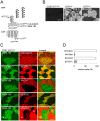

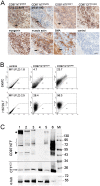
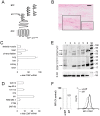
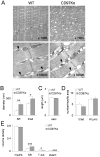
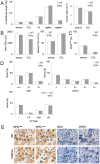
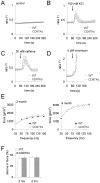
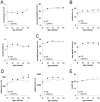
Similar articles
-
Reorganized stores and impaired calcium handling in skeletal muscle of mice lacking calsequestrin-1.J Physiol. 2007 Sep 1;583(Pt 2):767-84. doi: 10.1113/jphysiol.2007.138024. Epub 2007 Jul 12. J Physiol. 2007. PMID: 17627988 Free PMC article.
-
Morphology and molecular composition of sarcoplasmic reticulum surface junctions in the absence of DHPR and RyR in mouse skeletal muscle.Biophys J. 2002 Jun;82(6):3144-9. doi: 10.1016/S0006-3495(02)75656-7. Biophys J. 2002. PMID: 12023238 Free PMC article.
-
Fluorescent probing with felodipine of the dihydropyridine receptor and its interaction with the ryanodine receptor calcium release channel.Biochem Biophys Res Commun. 1998 Mar 17;244(2):519-24. doi: 10.1006/bbrc.1998.8233. Biochem Biophys Res Commun. 1998. PMID: 9514900
-
Ca2+ Channels Mediate Bidirectional Signaling between Sarcolemma and Sarcoplasmic Reticulum in Muscle Cells.Cells. 2019 Dec 24;9(1):55. doi: 10.3390/cells9010055. Cells. 2019. PMID: 31878335 Free PMC article. Review.
-
Organization of junctional sarcoplasmic reticulum proteins in skeletal muscle fibers.J Muscle Res Cell Motil. 2015 Dec;36(6):501-15. doi: 10.1007/s10974-015-9421-5. Epub 2015 Sep 15. J Muscle Res Cell Motil. 2015. PMID: 26374336 Review.
Cited by
-
Mechanosensitive adhesion G protein-coupled receptors: Insights from health and disease.Genes Dis. 2024 Mar 16;12(3):101267. doi: 10.1016/j.gendis.2024.101267. eCollection 2025 May. Genes Dis. 2024. PMID: 39935605 Free PMC article. Review.
-
The Evolutionary History of Vertebrate Adhesion GPCRs and Its Implication on Their Classification.Int J Mol Sci. 2021 Oct 30;22(21):11803. doi: 10.3390/ijms222111803. Int J Mol Sci. 2021. PMID: 34769233 Free PMC article.
-
Rhabdomyosarcoma Associated with Core Myopathy/Malignant Hyperthermia: Combined Effect of Germline Variants in RYR1 and ASPSCR1 May Play a Role.Genes (Basel). 2023 Jun 27;14(7):1360. doi: 10.3390/genes14071360. Genes (Basel). 2023. PMID: 37510264 Free PMC article.
-
To Detach, Migrate, Adhere, and Metastasize: CD97/ADGRE5 in Cancer.Cells. 2022 May 4;11(9):1538. doi: 10.3390/cells11091538. Cells. 2022. PMID: 35563846 Free PMC article. Review.
-
International Union of Basic and Clinical Pharmacology. XCIV. Adhesion G protein-coupled receptors.Pharmacol Rev. 2015;67(2):338-67. doi: 10.1124/pr.114.009647. Pharmacol Rev. 2015. PMID: 25713288 Free PMC article. Review.
References
-
- Yona S, Lin HH, Siu WO, Gordon S, Stacey M (2008) Adhesion-GPCRs: emerging roles for novel receptors. Trends Biochem Sci 33: 491–500. - PubMed
-
- Langenhan T, Aust G, Hamann J (2013) Sticky signaling - Adhesion class G protein-coupled receptors take the stage. Sci Signal 6: re3 doi: 10.1126/scisignal.2003825 - DOI - PubMed
-
- Lin HH, Chang GW, Davies JQ, Stacey M, Harris J, et al. (2004) Autocatalytic cleavage of the EMR2 receptor occurs at a conserved G protein-coupled receptor proteolytic site motif. J Biol Chem 279: 31823–31832. - PubMed
-
- Eichler W, Aust G, Hamann D (1994) Characterization of the early activation-dependent antigen on lymphocytes defined by the monoclonal antibody BL-Ac(F2). Scand J Immunol 39: 111–115. - PubMed
Publication types
MeSH terms
Substances
LinkOut - more resources
Full Text Sources
Other Literature Sources
Molecular Biology Databases
Research Materials
Miscellaneous

